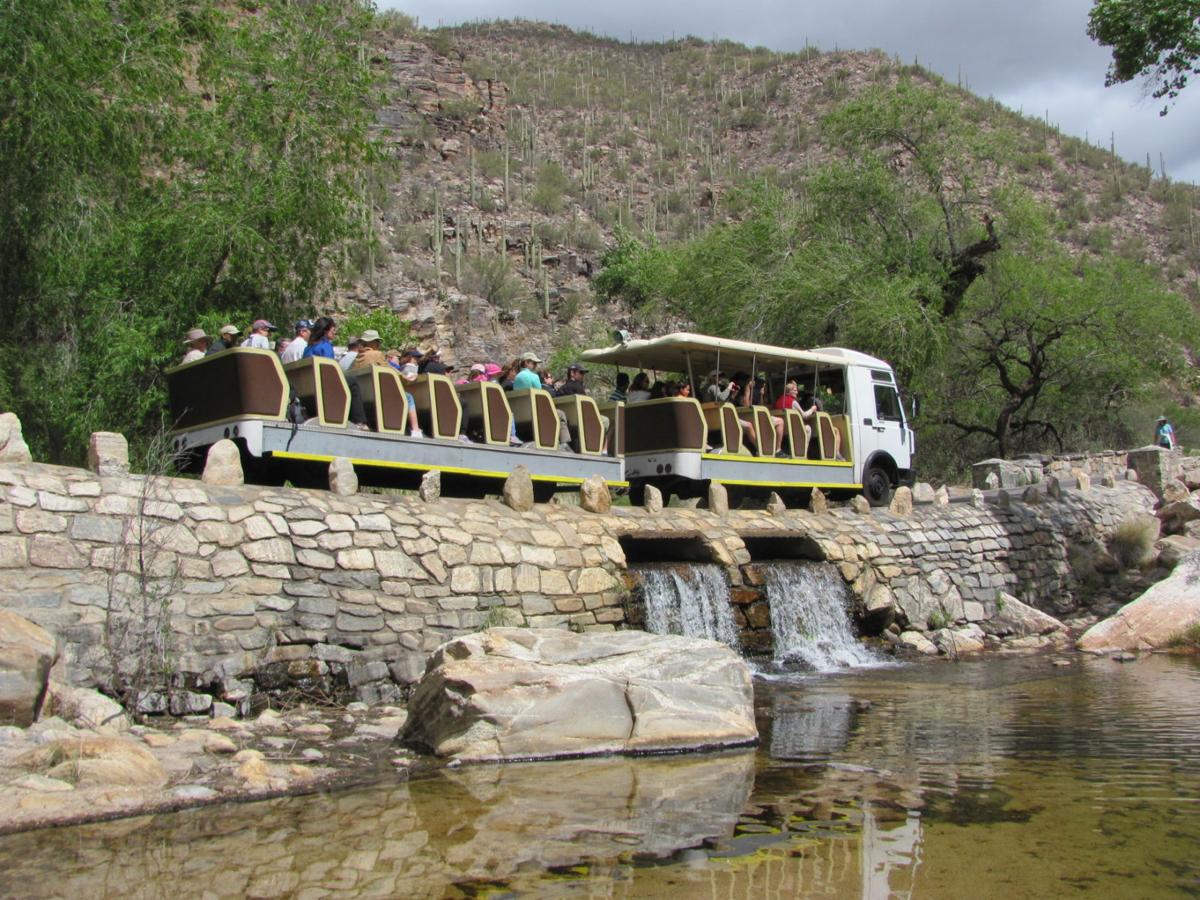A couple of weeks ago my brother and his wife were in town from Minnesota and we ended up at Sabino Canyon.
Of course we did — that’s what Tucsonans do with out-of-state guests, right? But we left too little time for a longer hike, so we had to take the tram to make it to the glorious upper canyon quickly. It cost $10 each, an increase from the last time I took it.
Choosing seats, I remembered from past trips to pick ones that were not in the exhaust path. Still, I got my calculations wrong, and we sat right where the diesel fumes swept down from the upright exhaust pipe and filled our noses.
It was a reminder that after all these years of grumbling, deliberation, federal procedures and calls for change, one of our top local attractions is still being unnecessarily fouled every day. The exhaust is what bothers me most, even though many of the trams use biodiesel, but other people have a harder time with the noise of the narration on the public-address system. And a few would rather not have the trams in the canyon at all.
That’s not going to happen. The trams serve a dual purpose of providing transportation for those who can’t make it far up the path — the elderly and young children, among others — and being an attraction unto themselves that introduces tourists to the best of our desert. But the trams can be improved and should have been long ago.
We are in the middle of another deliberation process now — most of the way through a new environmental assessment of the tram operations that should lead to a new 20-year contract. The current contract ends June 30. But there are some disturbing signs from the draft environmental assessment published Sept. 12 that the Forest Service is ready to compromise instead of solving the problems once and for all.
Even Friends of Sabino Canyon, a community group that has long tried to keep cordial relations with the Forest Service, submitted spicy comments questioning the agency’s draft proposal, which would require lower-emission vehicles but not zero emissions. It would also require that the sound system be designed to keep the noise closer to the vehicles.
“It appears that the USFS considered and rejected electric tram operations due to the power considerations needed for the last section uphill to Tram Stop #9,” the group’s board wrote.
“We saw the EA (environmental assessment) as unresponsive to the emphatic public interest for a clean and quiet transport resource that can convey visitors up to the end of Sabino and to the Bear Canyon trailhead,” they went on. “We are not convinced, from a reading of the EA, that electric alternatives would be unable to supply sufficient power to ascend the last hill to Tram Stop #9. We are convinced by evidence. If only some were provided.”
This goes to the heart of the matter: The Forest Service is prepared to cut corners, when this time, at long last, it should not.
Part of the problem apparently comes from above. The chief ranger of the Santa Catalina district, Ken Born, answered a few questions from me via email Friday. He explained that the environmental assessment should be complete in 30-45 days and that the service would issue a prospectus to which potential operators could respond.
But the part of his answers that jumped out at me most was this:
“The Forest Service Washington Office has suggested allowing the current permit holder first right of refusal on a new permit, under the condition that they can demonstrate that the terms, conditions, and permit holder responsibilities outlined in the prospectus can be met as part of their bid package/special use permit application.”
Why on Earth would that be? Sabino Canyon Tours, owned by Donn Ricketts, has operated the shuttle since 1986. Its vehicles are older than that. Ricketts has been operating under short-term contracts for the last several years, but overall has had a good 30-year run. His company can be thanked for its service — and has been thanked through decades of presumably profitable operation — but it doesn’t deserve special treatment.
I say this in part out of a sense of fairness but also out of annoyance. Another local tradition is arriving with your out-of-town guests at Sabino Canyon only to be told that the shuttle company does not take credit or debit cards, then having to drive back up East Sunrise Drive to a bank to get cash. Now there is an ATM in the visitors center, but for years that problem was constant.
I was able to talk with Ricketts on Friday, and he explained that the shuttle has never taken cards because it is costly and a hassle . He noted that there can be problems with disputed charges, and of course there are fees paid to finance companies. I get those problems, but they no longer wash in the low-cash society of 2017.
Ricketts also said he’s looked into electric vehicles, but just one unit he was looking at would cost $300,000. Obviously, it would take some years for him to pay that off.
That point is a good one to underlie some key principles that the Forest Service should establish — and accomplish this time — in coming to its next Sabino Canyon tram contract.
1. Pollution-free transportation.
2. Noise-limiting vehicles.
3. Payment available by debit or credit card.
4. An open bidding process with no favorites.
5. Long-term contracts only for those bidders able to fulfill the minimal terms.
Anyone who will not commit to ridding the canyon of exhaust and minimizing noise — and who finds convenient payment methods too much of a hassle — should not have a contract beyond a year or two.
There’s certainly no need to settle for 20 years of slight improvement after 30 years of status quo.





